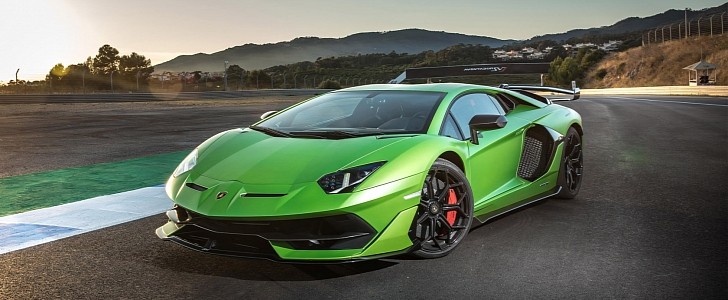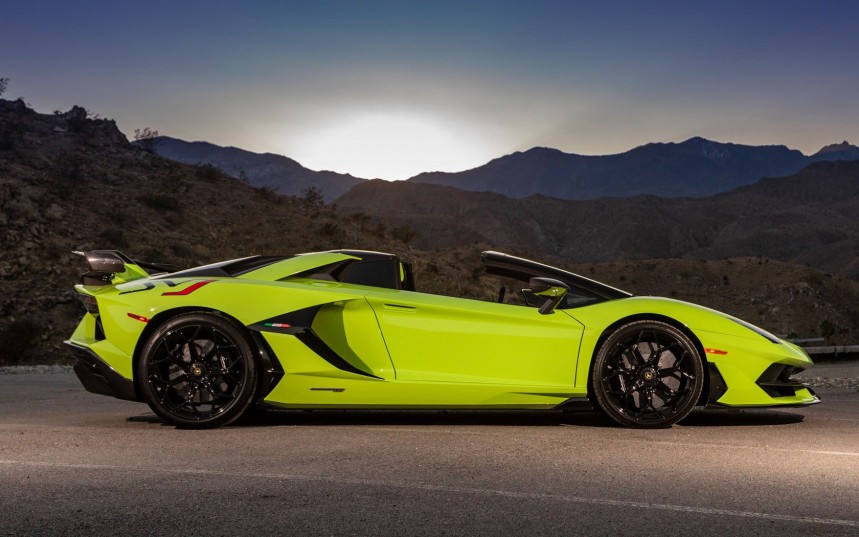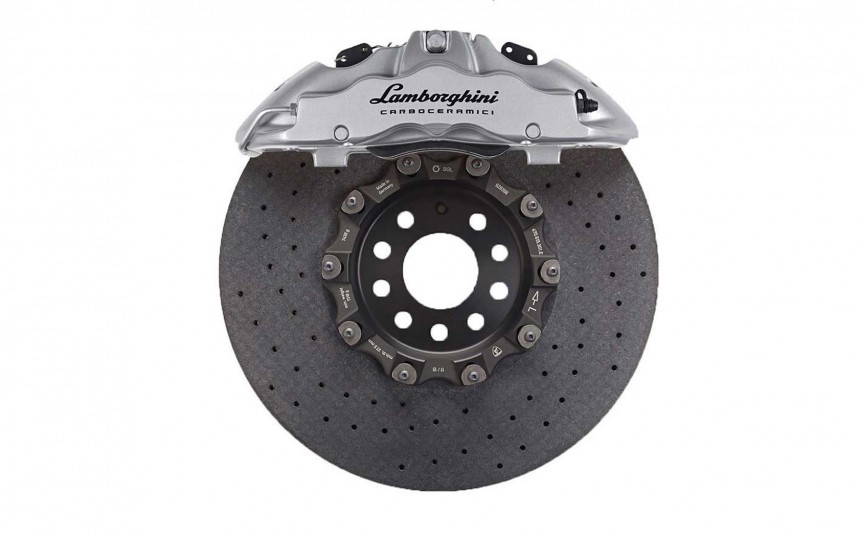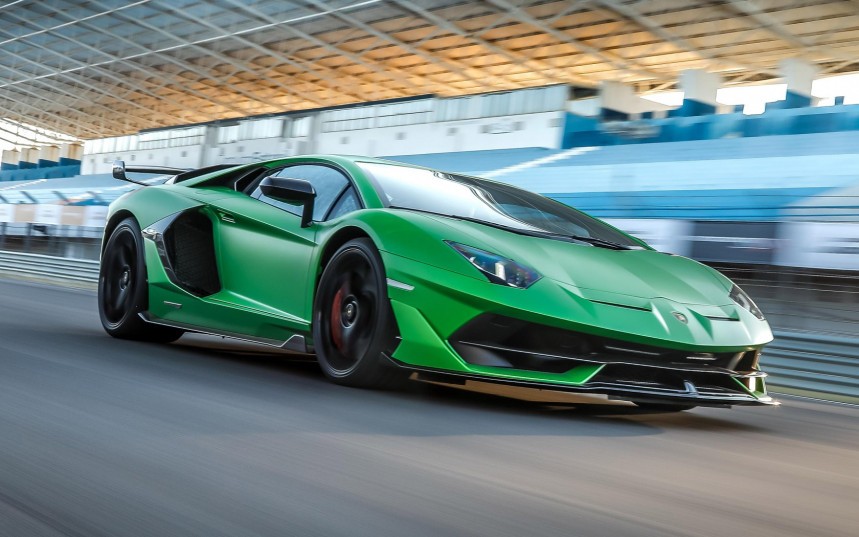One of the most respected and sought-after supercars of the last decade, the Lamborghini Aventador has a track-focused version that obliterated the Nurburgring-Nordschleife lap record for production cars. One of the key features of the SVJ’s success is its ultramodern braking system.
The Aventador was revealed to the world at the 2011 Geneva Motor Show as a successor to the flagship Murcielago.
Keeping the Lamborghini tradition alive, it gets its name from a 1,118-pound (508 kg) bull that was revered as one of the most powerful, agile, and brave Spanish Corrida fighting bulls of the last century.
Seven years later, after resounding success for the lineup, a track-oriented version was revealed in the shape of the Aventador SVJ LP770-4, with a limited-production Roadster body style being introduced a year later.
The SVJ (Super Veloce Jota) uses the same naturally-aspired 6.5-liter L539 V12 engine as the entire Aventador rang,e but it was redeveloped and features many enhancements that make it capable of producing 759 hp (566 kW; 770 PS), which is 10% more than the standard model.
Numerous weight-saving modifications were made, such as extensive use of carbon fiber body panels and a new titanium exhaust system that drops the weight of the SVJ to 1,525 kg (3,362 lb.), giving it a power-to-weight ratio of 0.5 hp/kg.
It can accelerate from 0 to 100 kph (0–62 mph) in 2.8 seconds and from 0 to 200 kph (0–124 mph) in 8.6 seconds, to a top speed of over 352 kph (219 mph).
It is also the first production V12 to feature the Italian manufacturer’s Aerodinamica Lamborghini Attiva (ALA) system, which helps the car produce 40% more downforce than the SV model.
To stop this road-legal rocket, engineers decided that the braking system they have developed with fellow Italian manufacturers Brembo for all other Aventador models would also do a great job on the SVJ.
The dual hydraulic circuit vacuum boosted system uses six-piston aluminum monobloc calipers in the front and four-piston calipers to stop the rear wheels.
Behind the gorgeous 20-inch front wheels are a pair of huge Brembo carbon-ceramic ventilated discs that measure 400x38 mm (15.72 inches), while the rear pair are smaller, with a diameter of 380x38 mm (14.93 inches).
If you ask the engineers if this is the best system for the SVJ they will be quick to point to the Nurburgring lap record and the 100-0 kph (62 to 0 mph) stopping distance of 30 meters (98.4 feet).
But an increasingly growing number of owners and professional drivers who got the chance to get behind the wheel of the SVJ has been complaining about the braking feel.
The main problem they report is that the car tends to wiggle at high-speed braking and is prone to oversteer, which in my opinion sounds exactly like what I would want from a Lamborghini.
But I am not a race driver, and the SVJ is not your run-of-the-mill Lamborghini being developed with track use in mind. So, it is fair to expect it to perform flawlessly on track, which is where an optimally developed braking system makes the difference between a competitive lap time and becoming the subject of all jokes of the evening.
Whether or not the braking system lives up to expectations is ultimately down to individual driving style and skill, and the fact that the engineers decided against bigger rotors or cast iron calipers that would have increased weight is an understandable choice.
The Lamborghini Aventador SVJ LP770-4 is one of the best track weapons out there and those who get to tame it should realize that regardless of how much they paid for the privilege, they still have to earn its respect by learning and adapting to its strengths and weaknesses.
Keeping the Lamborghini tradition alive, it gets its name from a 1,118-pound (508 kg) bull that was revered as one of the most powerful, agile, and brave Spanish Corrida fighting bulls of the last century.
Seven years later, after resounding success for the lineup, a track-oriented version was revealed in the shape of the Aventador SVJ LP770-4, with a limited-production Roadster body style being introduced a year later.
Numerous weight-saving modifications were made, such as extensive use of carbon fiber body panels and a new titanium exhaust system that drops the weight of the SVJ to 1,525 kg (3,362 lb.), giving it a power-to-weight ratio of 0.5 hp/kg.
It can accelerate from 0 to 100 kph (0–62 mph) in 2.8 seconds and from 0 to 200 kph (0–124 mph) in 8.6 seconds, to a top speed of over 352 kph (219 mph).
It is also the first production V12 to feature the Italian manufacturer’s Aerodinamica Lamborghini Attiva (ALA) system, which helps the car produce 40% more downforce than the SV model.
To stop this road-legal rocket, engineers decided that the braking system they have developed with fellow Italian manufacturers Brembo for all other Aventador models would also do a great job on the SVJ.
The dual hydraulic circuit vacuum boosted system uses six-piston aluminum monobloc calipers in the front and four-piston calipers to stop the rear wheels.
If you ask the engineers if this is the best system for the SVJ they will be quick to point to the Nurburgring lap record and the 100-0 kph (62 to 0 mph) stopping distance of 30 meters (98.4 feet).
But an increasingly growing number of owners and professional drivers who got the chance to get behind the wheel of the SVJ has been complaining about the braking feel.
But I am not a race driver, and the SVJ is not your run-of-the-mill Lamborghini being developed with track use in mind. So, it is fair to expect it to perform flawlessly on track, which is where an optimally developed braking system makes the difference between a competitive lap time and becoming the subject of all jokes of the evening.
Whether or not the braking system lives up to expectations is ultimately down to individual driving style and skill, and the fact that the engineers decided against bigger rotors or cast iron calipers that would have increased weight is an understandable choice.
The Lamborghini Aventador SVJ LP770-4 is one of the best track weapons out there and those who get to tame it should realize that regardless of how much they paid for the privilege, they still have to earn its respect by learning and adapting to its strengths and weaknesses.













